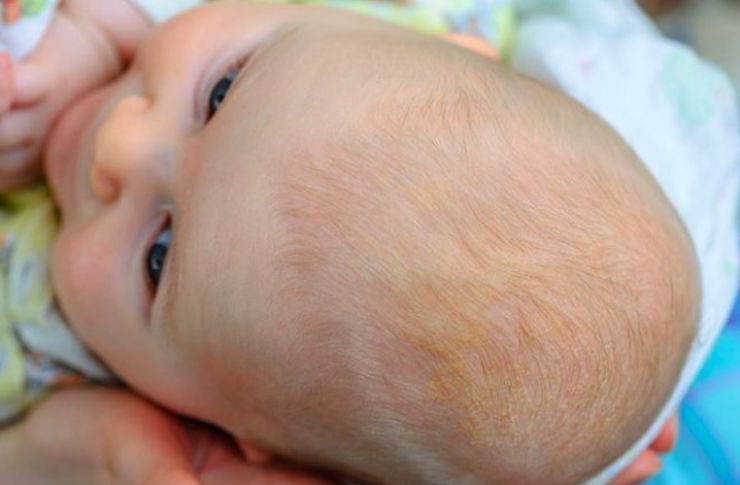Cradle cap (or infant seborrheic dermatitis) is a very common disorder in nursing babies, especially in the first months of life. Discover its causes, what it consists of and how to treat it.

Ensuring the health of our baby is one of the biggest responsibilities that parenting entails, especially if the little one is just a couple of months old. It is a time when they can suffer from many ills.
Have you heard of cradle cap? At first it sounds like something terrible but it is a small defect that is absolutely harmless but that can be quite frightening at first glance.
What is cradle cap?
If you notice that your little one’s leather hair looks flaky, excessively dry and that from time to time it may seem as if it suffers from dandruff, then you are in the presence of this quite common condition in babies.
Doctors describe it as a child seborrheic dermatitis, especially if, in addition to the above, there are quite thick crusts, a greasy and yellowish area, in addition to some brown spots. For this reason, from a rather popular point of view, it is known by the name of cradle cap.
It is a condition that appears between the first month and 12 months of life, and that just after the first year can disappear. However, in some babies it can last longer.
There are more extreme cases in which the cradle cap can spread to other areas such as near and around the ears, the edge of the eyebrows and some parts of the armpits, neck and even on the heels of the feet.
Does it have a specific cause?
Medically there has been no way to prove what causes it but what is known is that it is not associated with the lack of hygiene of the baby or the suffering of some type of allergy that involves mites, for example.
There is a theory that suggests that during the last month of gestation, the mother passes a quantity of hormones to the baby, which stimulates the sebaceous glands excessively. Therefore is the production of sebum.
Another theory speaks of a fungus that is produced through the production of sebum and is transformed into this condition that may worry the parents of a newborn baby too much.
What is known is that cradle cap is not contagious and does not have a major impact on the health of your baby. However, if it gets too complicated, you may get itchy.
Is there a treatment?
In theory, it is a condition that will disappear over time, especially when the baby reaches the first year of life. But if it’s something you can’t stand for any reason, you can try the following.
You must massage the affected areas with your fingertips or with the help of a special bristle brush for babies. This little stimulation will make the scales go away little by little.
Wash your head or other parts once a day with lukewarm water. If you are applying soap or shampoo, be sure to remove everything and then dry with a towel, rubbing gently until the scales are gone.
On the market there are shampoos specially designed for this problem, but before using them, consult your pediatrician if it is convenient. Basically what you will do is wash the scalp with the product and dry it.
There is also the alternative of rubbing the scalp with pure and natural oils, such as olive or almond. You let it act for 15 minutes and then you rub it gently with a dry cloth.
Brushes with fine teeth, especially those made of plastic or wood, are ideal for brushing the affected area. You have to try not to be too rough, babies are very delicate.
When you use personal hygiene products, such as creams, shampoos, among others, you must be careful that the skin absorbs them well or that there are no residues. Remember that the pores of the skin must breathe so that the problem does not continue to aggravate.
Medical help
Medical care for cradle cap is not necessary, unless it is too extreme a case. It is known that some babies can have quite serious episodes, which may even bleed.
There are parents who venture to buy shampoos that are used for dandruff that are sold without a prescription. Others opt for cortisone-based creams when there is inflammation in that area. In any case, you have to be responsible and do not use any of this unless the pediatrician indicates it.































